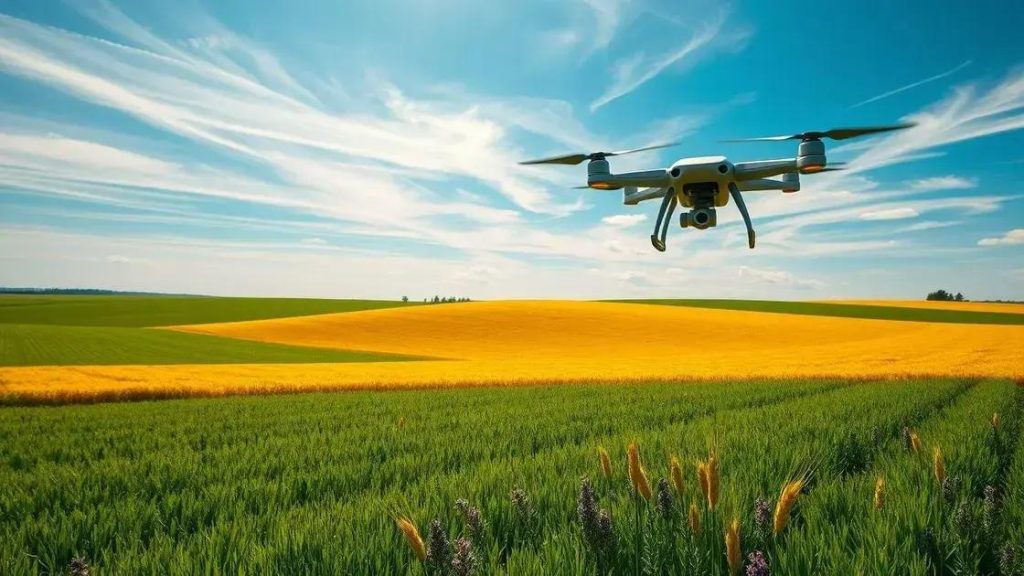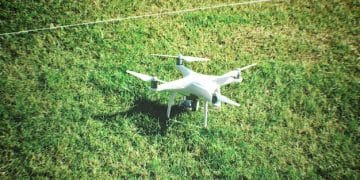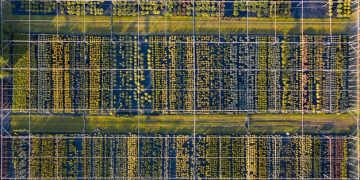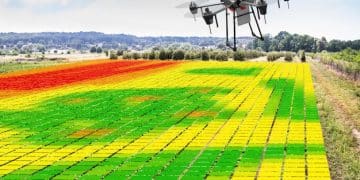AI-driven crop health monitoring: transform your farming approach

AI-driven crop health monitoring involves using technologies like drones and sensors to provide real-time insights, enabling farmers to enhance productivity and manage resources efficiently.
AI-driven crop health monitoring opens new avenues for farmers looking to enhance their yields. Imagine being able to spot issues in your fields before they affect your harvest. Curious how this works? Let’s dive in!
Understanding AI-driven crop health monitoring
Understanding AI-driven crop health monitoring is essential for farmers today. By integrating technology with agriculture, farmers can greatly enhance their productivity and sustainability. This modern approach leverages various tools and techniques to keep a close eye on the health of crops.
How does it work?
AI-driven systems utilize data collected from sensors, drones, and satellite imagery. This data gives farmers insights into their fields, helping identify problems like disease or poor soil conditions early. These systems analyze images and environmental data to make predictions about crop health.
Benefits of AI-driven monitoring
The advantages are numerous:
- Early detection: Identify issues before they become severe.
- Improved yields: Optimize crop production through informed decisions.
- Resource efficiency: Use water and fertilizers more effectively.
- Cost savings: Reduce waste and increase profits.
Using AI can also help farmers understand the needs of their crops better. For example, with real-time data, they can treat specific areas of crop fields based on their unique needs rather than applying treatments uniformly. This targeted approach maximizes the benefits while minimizing harm to the environment.
Furthermore, the integration of machine learning allows these systems to improve continuously. As more data is collected, the algorithms used for monitoring become smarter and more efficient. Farmers can easily stay ahead of potential crop issues, ensuring healthy harvests season after season.
In conclusion, AI-driven crop health monitoring is transforming modern agriculture. By employing these advanced technologies, farmers can achieve greater efficiencies and better manage their resources.
Key benefits for modern agriculture

Understanding the key benefits for modern agriculture is essential for any farmer looking to improve their practices. By adopting new technologies, farmers can gain valuable insights and boost their productivity.
Enhanced Efficiency
One significant advantage is enhanced efficiency. With tools like drones and sensors, farmers can monitor their crops closely. They can access precise data that allows them to make informed decisions.
Better Resource Management
Another benefit is improved resource management. Using AI, farmers can apply water and fertilizers more effectively. This targeted approach not only conserves resources but also reduces costs and environmental impact.
- Water savings: Use only what is necessary for optimal growth.
- Reduced chemical use: Apply pesticides and fertilizers more precisely.
- Cost reduction: Lower operational costs with smarter practices.
Farmers also experience enhanced crop quality and higher yields. With constant monitoring, they can respond to any issues quickly. This proactive approach prevents diseases and pests from spreading.
Moreover, AI-driven insights can help farmers adapt to changing weather conditions. By analyzing climate data, farmers can plan accordingly and maximize their harvests even in unpredictable situations. This adaptability is crucial for maintaining productivity and profitability.
Ultimately, embracing modern techniques like AI-driven crop health monitoring can transform agricultural practices. These benefits not only lead to better crop performance but also foster a sustainable future for farming.
Technologies powering crop monitoring
There are several exciting technologies powering crop monitoring today. These tools help farmers gain insights into their fields, improving their ability to manage crops effectively. From drones to soil sensors, each technology plays a crucial role.
Drones and Aerial Imagery
Drones have revolutionized the way farmers monitor their crops. Equipped with high-resolution cameras, they capture detailed images of fields. This allows farmers to see areas that need attention quickly. With the help of aerial imagery, potential problems such as nutrient deficiencies or pest infestations can be identified early.
Remote Sensing
Remote sensing technology involves collecting data from satellites or aircraft. This data provides valuable information about crop health and growth patterns. Farmers can analyze this information to understand how well their crops are performing across large areas.
- NDVI (Normalized Difference Vegetation Index): A key tool in remote sensing, NDVI helps measure plant health.
- Thermal imaging: Monitors temperature variations in crops, indicating water stress.
- Multispectral imaging: Captures data in different wavelengths to assess crop health.
Soil sensors play an important role too. These devices measure moisture levels, pH, and nutrient content in the soil. Farmers can use this information to make informed decisions about irrigation and fertilization. By understanding the soil’s needs, they can optimize growth conditions for their plants.
Additionally, software platforms analyze data gathered from these technologies. These insights can guide farmers in real-time, allowing them to make immediate adjustments. By acting quickly, they can protect their crops and improve yields significantly.
As these technologies evolve, they continue to shape the future of agriculture. Embracing them will help farmers tackle challenges and enhance overall productivity.
Getting started with AI in farming

Getting started with AI in farming can seem daunting, but it opens up exciting possibilities for increased efficiency and productivity. Farmers can begin to implement AI technologies today to transform their operations.
Assess Your Needs
The first step is to assess what your farm needs. Identify specific challenges or areas where you think technology can help. Whether it’s improving crop health monitoring or optimizing resource use, having a clear focus will guide your journey.
Research Available Tools
There are many AI tools available for farmers. Some popular options include:
- Precision Agriculture Software: This software helps analyze data for better decision-making.
- Drone Technology: Use drones for monitoring crop health and applying treatments.
- Farm Management Apps: These apps can assist in tracking yields and managing operations.
Once you find the right tools, it’s essential to ensure they integrate well with your existing systems. Tech compatibility can save time and resources.
Training is also crucial. Familiarizing yourself and your team with new technologies will help you maximize their benefits. Consider attending workshops or online courses that focus on AI in agriculture. Many resources are available that cater to different levels of expertise.
As you begin, start with small projects to test the effectiveness of AI solutions. Gradually expand your use of technology as you become more confident in its capabilities. This hands-on approach will allow you to see improvements firsthand.
Implementing AI in farming is not just about adopting new tools. It’s about embracing a shift in how you approach agricultural challenges. With time, patience, and the right strategies, farmers can experience significant benefits.
In conclusion, integrating AI in farming can greatly enhance productivity and sustainability. By adopting technologies like drones and soil sensors, farmers can monitor crop health effectively. It’s important to assess your needs, research suitable tools, and invest in training. With gradual implementation, farmers can see significant benefits, leading to healthier crops and improved yields. As agriculture continues to evolve, embracing these innovations will prepare farmers for a more efficient and sustainable future.
FAQ – Frequently Asked Questions about AI in Farming
How can AI improve crop health monitoring?
AI technologies provide real-time data and insights, enabling farmers to detect issues earlier and make informed decisions.
What technologies are available for farmers?
Farmers can use drones, soil sensors, and precision agriculture software to monitor crop health and optimize resource use.
Is training necessary to use AI tools?
Yes, training helps farmers understand and effectively utilize AI tools to maximize their benefits.
How can I start implementing AI on my farm?
Begin by assessing your needs, researching available technologies, and starting with small pilot projects to test their effectiveness.





